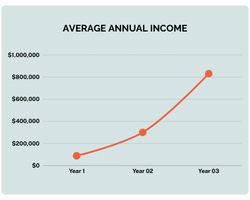Choosing the right life insurance policy can feel overwhelming, but understanding the different types of life insurance and how they work is crucial to making an informed decision. Life insurance protects your family and loved ones by providing financial support in the event of your passing. But not all policies are created equal—some offer coverage for a limited period, while others provide lifelong protection and a savings component.
In this guide, we’ll explore the main types of life insurance, provide vivid examples of each, and help you decide which type might be best for your unique situation.
1. Term Life Insurance
Overview
Term life insurance is the simplest and most affordable type of life insurance. It provides coverage for a specified period—typically 10, 20, or 30 years. If the insured person dies within the term, their beneficiaries receive the death benefit. However, if the term expires and the policyholder is still alive, there’s no payout.
Example:
Imagine you’re a 35-year-old parent with two young children. You purchase a 20-year term life insurance policy to provide financial protection during the years when your children are growing up and most dependent on your income. If something happens to you before the policy ends, the payout would help cover mortgage payments, childcare costs, and future college expenses. However, if you live beyond the 20-year term, the policy simply ends, and no death benefit is paid.
Who is it best for?
• Young families with children or dependents who need protection for a specific period.
• Individuals looking for affordable coverage to cover major financial obligations (e.g., mortgage, student loans).
• Those who want flexibility—term life policies are typically easier to cancel or adjust.
2. Whole Life Insurance
Overview
Whole life insurance provides coverage for your entire life, as long as you continue paying the premiums. Unlike term life insurance, whole life insurance includes a savings component known as the “cash value,” which grows over time. You can borrow against this cash value or use it to pay future premiums.
Example:
Imagine you’re a 45-year-old business owner who wants to ensure that your family will receive a payout no matter when you pass away. You purchase a whole life insurance policy that not only guarantees a death benefit for your family but also builds cash value over time. This cash value acts like a savings account that grows tax-deferred, and you can borrow from it to cover business expenses, pay for your children’s education, or even fund retirement.
Who is it best for?
• Individuals seeking lifelong protection and want to leave a legacy for their family.
• People who want to accumulate savings within their insurance policy for future use.
• Those with higher premiums in mind, as whole life insurance typically costs more than term life but offers more long-term benefits.
3. Universal Life Insurance
Overview
Universal life insurance offers lifelong coverage like whole life insurance but with more flexibility. With universal life insurance, you can adjust your premiums and death benefit amount over time to suit your financial situation. The policy also builds cash value that grows based on interest rates or investment performance, depending on the type of universal policy.
Example:
Let’s say you’re a 40-year-old professional who anticipates changes in your financial situation over time. Initially, you might need more coverage to protect your children and cover your mortgage, but as you get closer to retirement, you want to reduce the death benefit and pay lower premiums. Universal life insurance allows you to make those adjustments while still offering lifelong protection.
Who is it best for?
• People who want flexibility to change their death benefit or premium payments as their financial situation evolves.
• Individuals who want to accumulate cash value while having control over how much they pay and how much coverage they need at different stages of life.
• Those comfortable with investment-like features in their insurance policy.
4. Variable Life Insurance
Overview
Variable life insurance is a type of permanent life insurance that allows the policyholder to invest the cash value in different sub-accounts, similar to mutual funds. The cash value and death benefit fluctuate based on the performance of these investments. This type of policy has the potential for higher returns but also comes with greater risk.
Example:
Suppose you’re a 35-year-old investor who’s comfortable with risk and wants to combine life insurance with an investment strategy. With variable life insurance, you can choose to invest the policy’s cash value in stocks, bonds, or other financial instruments. If the market performs well, your cash value grows faster, potentially increasing the death benefit. However, if the market performs poorly, both the cash value and death benefit may decrease.
Who is it best for?
• Experienced investors looking for growth opportunities in their life insurance policy.
• Individuals with a high-risk tolerance who are comfortable with the idea of fluctuating cash value and death benefits.
• Those who want to take advantage of market performance to grow their policy’s value.
5. Indexed Universal Life Insurance
Overview
Indexed universal life (IUL) insurance is a variation of universal life insurance where the cash value grows based on the performance of a stock market index, such as the S&P 500. While the policy allows for potential growth, it also includes caps and floors to limit both gains and losses.
Example:
Imagine you’re a 45-year-old working professional who wants to benefit from stock market growth but also seeks protection from market downturns. With an IUL policy, your cash value is linked to the performance of an index, but if the market drops, your policy has a floor that limits your losses. At the same time, if the market performs well, your cash value grows within a capped rate, offering balanced growth and protection.
Who is it best for?
• Individuals seeking a balance between growth potential and protection from losses.
• People who want to grow their cash value based on market performance but with limits on both gains and losses.
• Those looking for flexible premiums and death benefit amounts, similar to standard universal life insurance.
6. Final Expense Insurance
Overview
Final expense insurance, also known as burial or funeral insurance, is designed to cover end-of-life expenses such as funeral costs, medical bills, or outstanding debts. These policies typically offer a smaller death benefit compared to other types of life insurance but are easier to qualify for and don’t require a medical exam.
Example:
Let’s say you’re a 60-year-old retiree with minimal savings, but you don’t want your family to bear the burden of your funeral costs. You purchase a final expense policy with a $15,000 death benefit, ensuring that your family will have enough to cover your funeral expenses and any remaining medical bills.
Who is it best for?
• Seniors who want to cover their funeral and final expenses without burdening their loved ones.
• Individuals with health issues who may not qualify for larger life insurance policies.
• Those seeking affordable, low-coverage policies to handle specific expenses.
Which Life Insurance Is Best for You?
The type of life insurance that’s best for you depends on your personal goals, financial situation, and stage of life. Here are some general guidelines to help you decide:
• For young families or those with specific financial obligations, term life insurance offers affordable protection for a set period.
• If you want lifelong coverage and the opportunity to build savings, whole life or universal life insurance may be the better option.
• For those seeking growth potential through investments, variable life or indexed universal life insurance offers the chance to grow your cash value.
• If your main concern is end-of-life costs, final expense insurance can help ensure your family isn’t burdened with funeral expenses.
Life insurance is not a one-size-fits-all product. Each type offers different benefits and suits different stages of life or financial needs. Whether you’re looking for simple, affordable coverage or a more flexible, investment-oriented policy, there’s a life insurance plan out there that fits your needs. Evaluate your goals, consult a licensed insurance professional, and choose the policy that will offer you and your family the greatest peace of mind.
Ready to explore your life insurance options? Contact us today to find the best policy for your needs and protect your loved ones.





